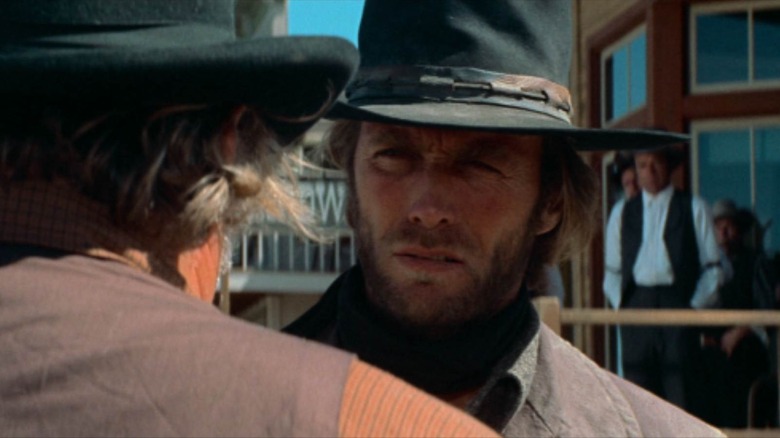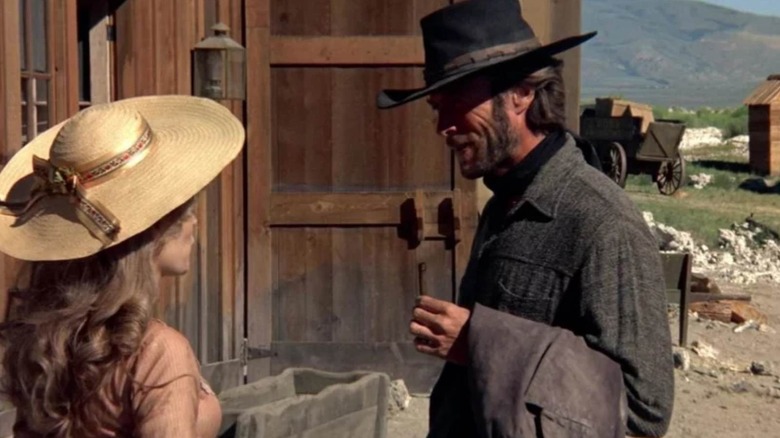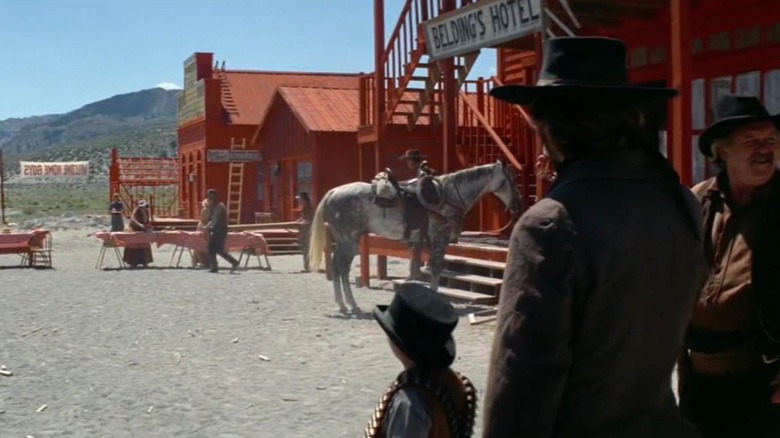Where Was High Plains Drifter Filmed? Every Major Location Explained
In 1973, western icon Clint Eastwood took it upon himself not just to star in a new addition to the genre that defined his career, but also to direct in it. "High Plains Drifter" is the first western he helmed himself, and at times feels more akin to an almost supernatural film from the legendary actor. Starring as The Stranger, his character wanders into town only to be offered the job of protecting the place and its people from three murderers seeking revenge. Eastwood's cigar-chewing gunslinger is no hero, though, and instead swiftly begins to feel like a steely-eyed grim reaper, addressing a communal sin that the town is forced to remember.
Demonstrating in the early stages of what would become Eastwood's world-renowned efficiency behind the camera, "High Plains Drifter" stands out as not only one of his best directorial efforts but one of his all-time great on-screen performances, too. Lean and mean in its development, Eastwood was meticulous with his budget for the project, even managing to wrap up production two days ahead of schedule, according to Marc Eliot's "American Rebel: The Life of Clint Eastwood." However, in the case of the titular location, Eastwood's directorial debut in the Old West seemingly took a wrong turn and completely avoided the High Plains entirely, filming in a very different spot.
High Plains Drifter was filmed near Mono Lake, California
In Eastwood's chilling and eerie movie, the only place the High Plains are found in "High Plains Drifter" is in the title. The notably flat and lush grassland of the High Plains is absent from the movie, replaced by a far rockier and almost barren terrain. This visual reflects the town The Stranger saunters into, where goodness seems to have removed itself from Lago due to its past mistakes.
To create this purgatorial plot of land, Eastwood headed to Mono, California, and primarily to Mono Lake for the town itself. Veering away from the familiar sun-scorched towns and vistas that many of Eastwood's previous westerns inhabited, the one he created here feels far colder and barely hanging on. Even the addition of a nearby body of water amplifies the star and director's efforts to craft an almost alternative western — one where it isn't the song of cicadas filling a scene, but rather the cries of seagulls from the nearby lake. As for Lago, with all its worn and unsettling atmosphere, Eastwood chose not to look for an existing town for The Stranger to hole up in. Instead, he had one built from scratch.
Clint Eastwood built Lago from the ground up for High Plains Drifter — and then burnt it down
To create a town painted red in "High Plains Drifter," Eastwood first needed one constructed from the ground up. Rather than working in a studio, he opted to create his own little world with fully finished interiors. This approach allowed him to do most of the filming on-site, especially for the bar and barbershop that The Stranger visits and wreaks havoc in, leading to one of Eastwood's most unforgettable on-screen moments. This method contributed to Eastwood's budget-friendly filmmaking, allowing all shooting to happen in this quaint little town with a dark secret. That is, until it was set ablaze for the film's final scenes when The Stranger leaves the locals in the ruin they created for themselves.
In addition to The Stranger's brief residence, complete with angry locals and a lot of red paint, Eastwood filmed near Winnemucca Lake in Nevada, the Sierra Mountains, and the Inyo National Forest. As far as Eastwood's directorial efforts in the Wild West go, "High Plains Drifter" shoots from the hip and doesn't waste any time, clearly acting an invaluable stepping stone that allowed him to ride into the next phase of his already incredible career.


